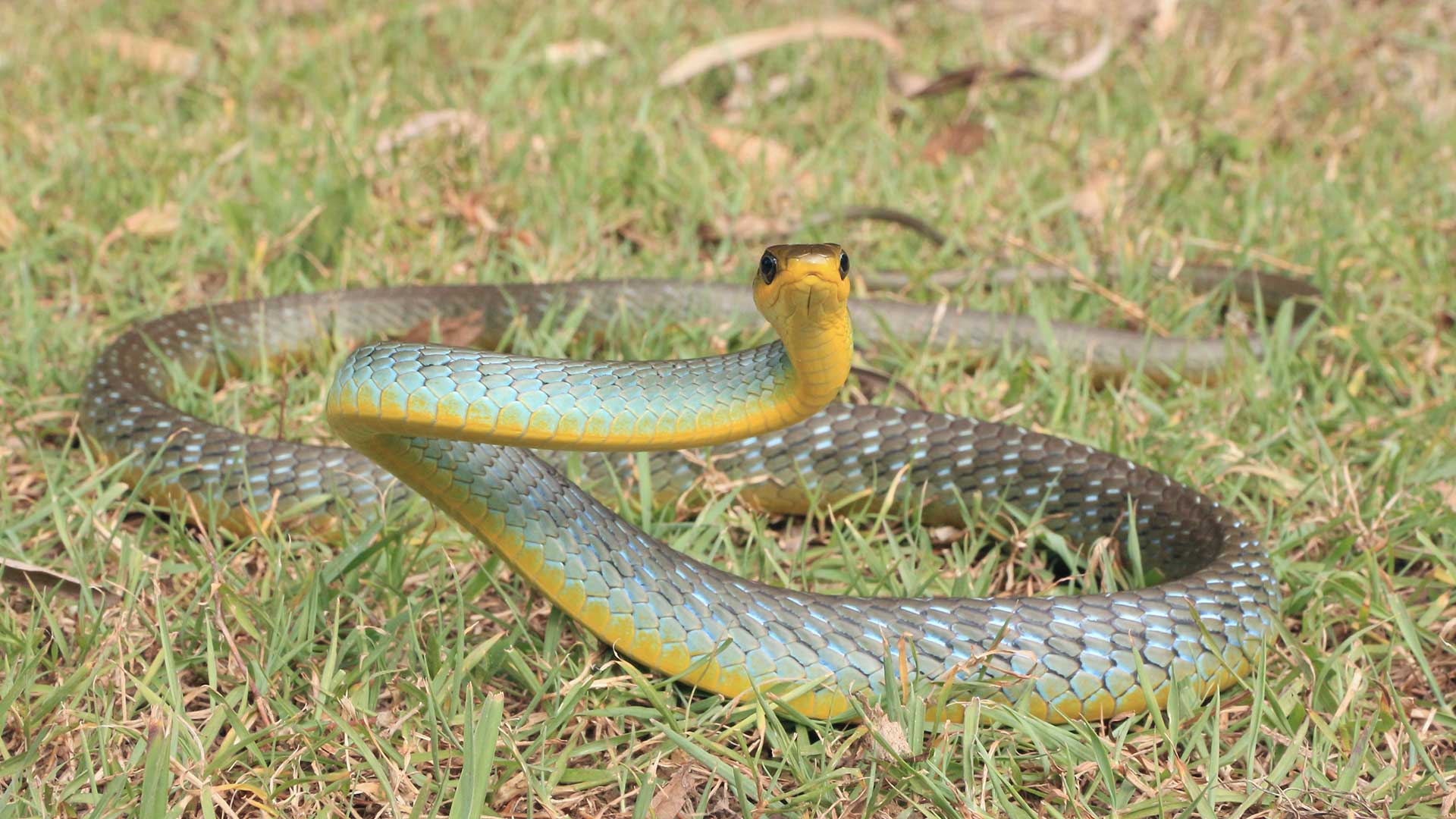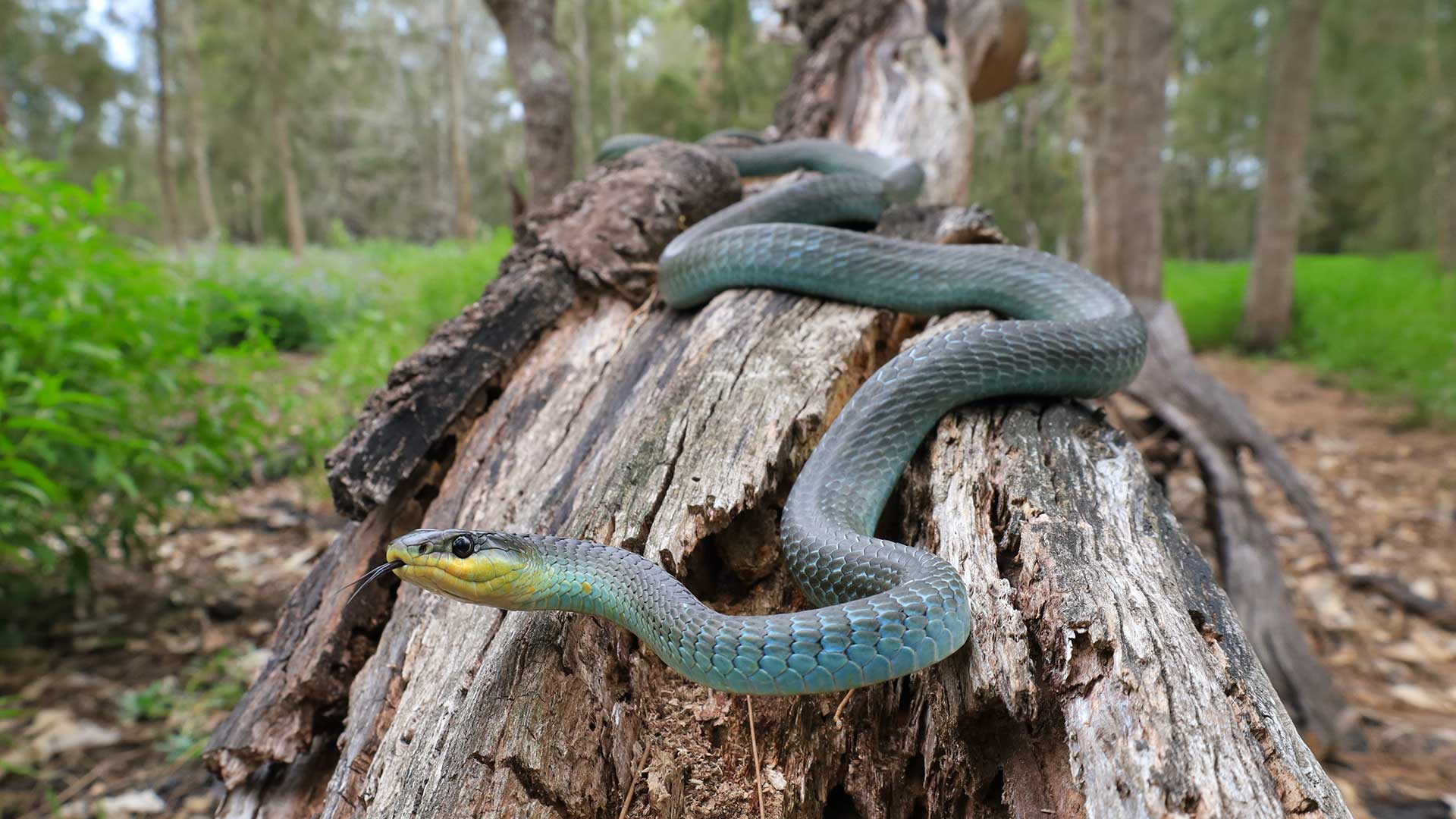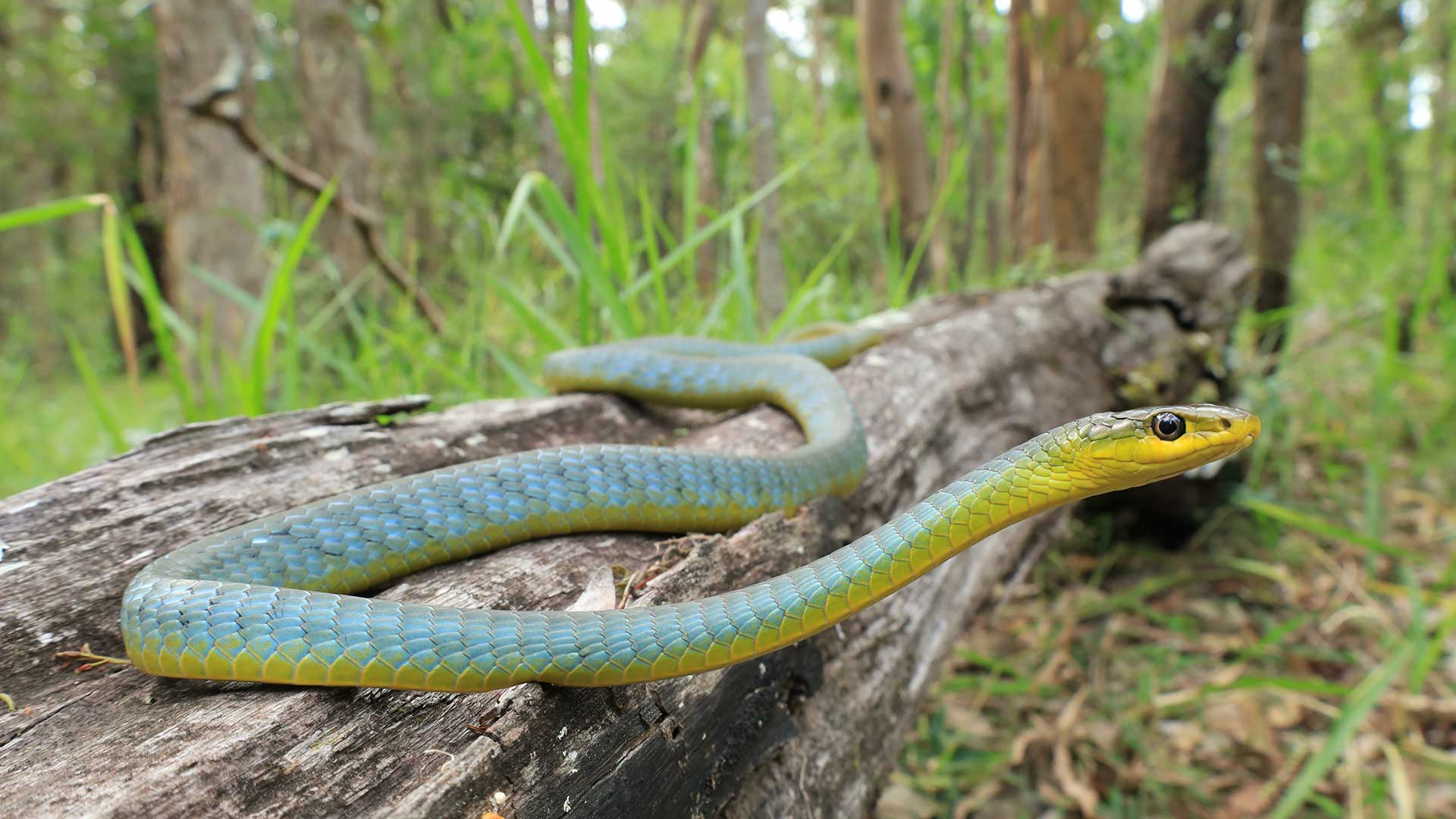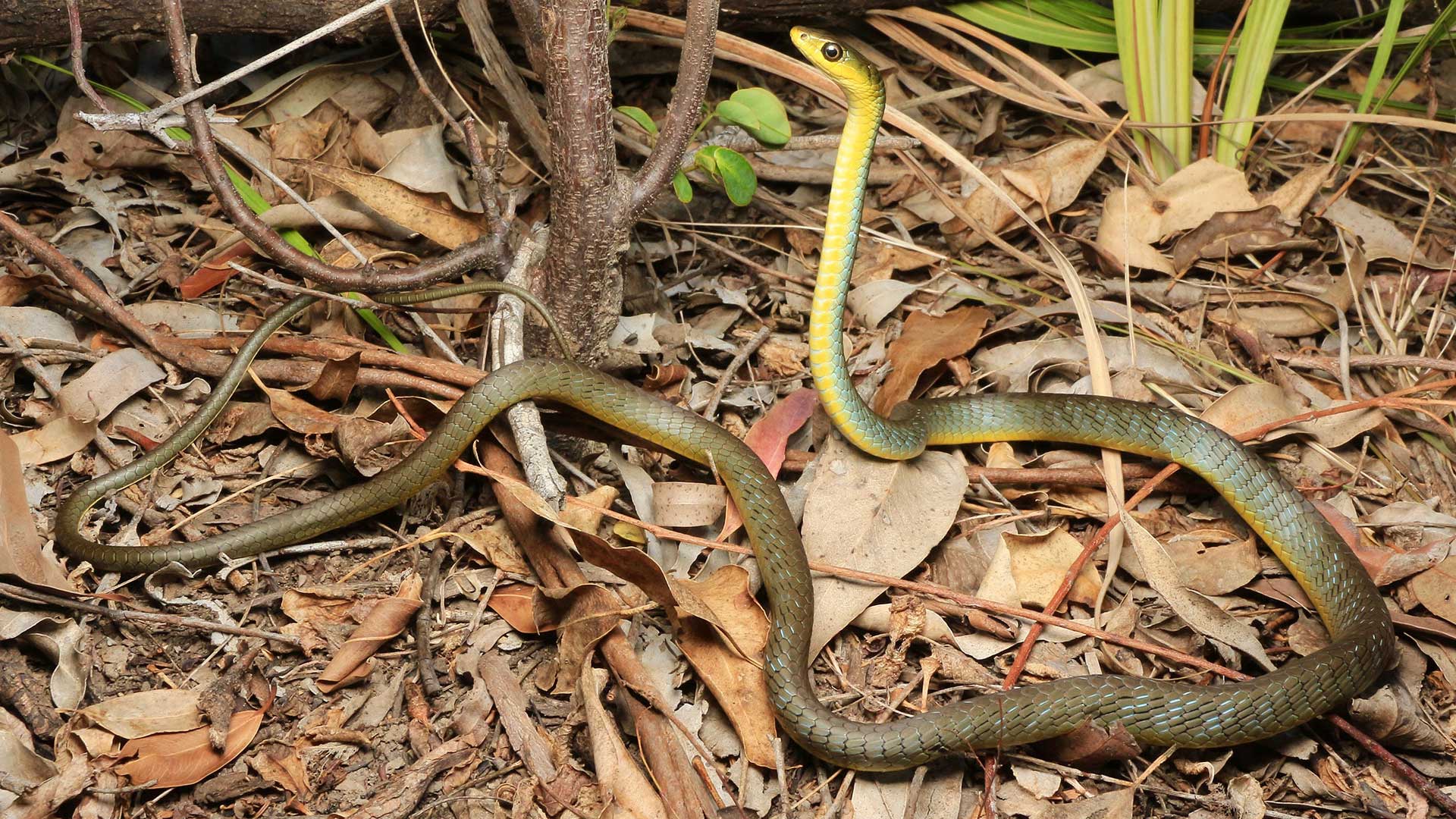Dendrelaphis punctulatus
VENOM: Non-venomous, bites are unlikely to require medical assistance.
SIZE: Growing to 2m (Avg 1.5m)
LOCAL DISTRIBUTION: The Common Tree Snake is considered one of the most regularly encountered snake species throughout the Gold Coast, Brisbane and Scenic Rim regions.
HABITAT: Common Tree Snakes have been recorded in just about all habitat types within the region, including sclerophyll forests, rainforests, wetlands and vine thickets. This species is also abundant in suburbia; however, their agile, arboreal nature means they can often disappear just as fast as they were seen. Common Tree Snakes primarily feed on frogs and are therefore found in much higher numbers surrounding wetlands and water courses.
GENERAL DESCRIPTION: The Common Tree Snake has an extremely slenderbuild with specimens rarely exceeding an adults’ thumb width in diameter. This species can range immensely incolour, from green, brown, black, grey, golden and blue. Their belly is normally a vibrant yellow, blue or grey.
ADDITIONAL NOTES: After each breeding season pregnant females give birth to between 5 and 15 eggs. These snakes pose absolutely no threat to people or pets and are at significantly more risk of being killed by domesticated dogs and cats. Their lack of venom and size means they rely on a foul smell musk to deter potential threats.
SIMILAR LOOKING SPECIES: YELLOW FACED WHIP SNAKE, EASTERN BROWN SNAKE




It’s important to realise that many species of snake can vary in colour, pattern and size. This often makes it very hard to make a positive identification of the snake. You should always assume that a snake is highly venomous, keep your family and pets at a safe distance and call a Gold Coast snake catcher.